The 13 Best Education Articles From October: A New Model for School Integration, Elizabeth Warren’s Controversial Education Plan, Closing the Word Gap & More
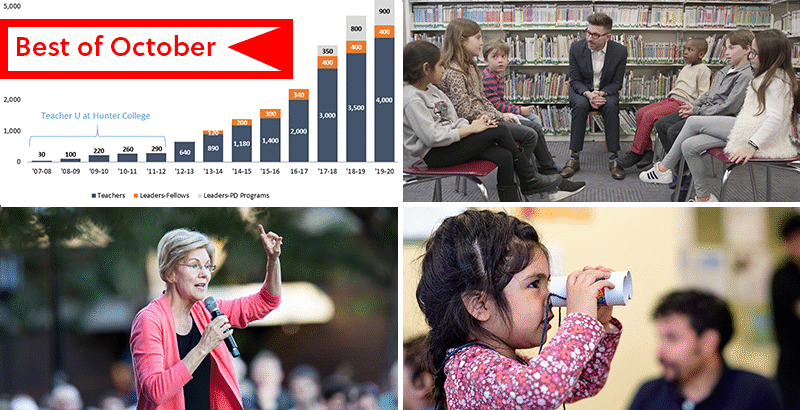
Every month, we round up our most popular and buzzed-about articles from the past four weeks. (Go deeper: See our top highlights from September, August and beyond right here)
It was a month of insightful analysis and engaging profiles here at The 74, from new reports on Boston’s high-needs students and the nation’s latest NAEP scores to Conor Williams’s deep dive into district-charter collaborations, Beth Hawkins’s explorations of a school committed to integration in a district intent on cementing historic segregation, and Mark Keierleber’s investigation into a sponsorship deal that puts an imprimatur on a somewhat questionable school security product. More details on the month’s most buzzed-about stories below. (You can always get our top news and analysis delivered straight to your inbox by signing up for The 74 Newsletter)
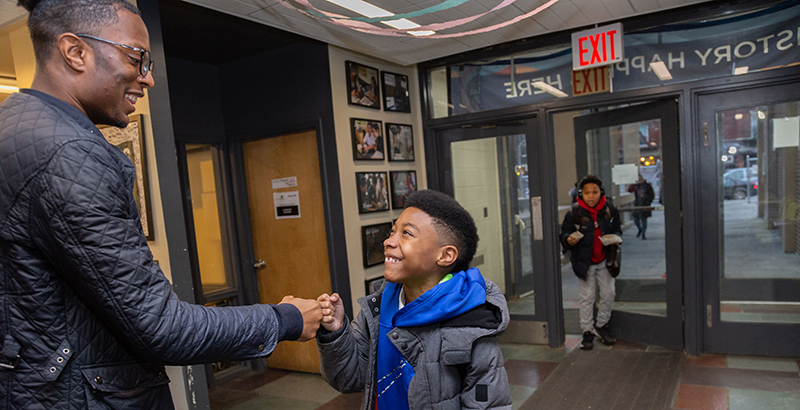
School Integration: When parents and leaders in New York City’s Community School District 15 decided to experiment with integrating their middle schools, they turned for a model to a local public charter school that for years has used a weighted lottery to enroll a nearly perfect socioeconomic cross section of the neighborhood. Located a short, leafy walk in one direction from some of Brooklyn’s most desirable brownstones and a quick stroll in the other from working-class immigrant enclaves, the Brooklyn Prospect Charter School Windsor Terrace campus serves 324 students, half of them economically disadvantaged, just like the surrounding neighborhoods. While nearby district schools are intensely segregated, Brooklyn Prospect is broadly and intentionally diverse — in terms of students’ races, ethnicities, incomes, disability statuses and home languages. As District 15’s experiment unfolds, Windsor Terrace and its three sister campuses offer lessons not only in integrating a student body but in avoiding the pitfalls of thinking the job of desegregation ends there. (Read the full report)
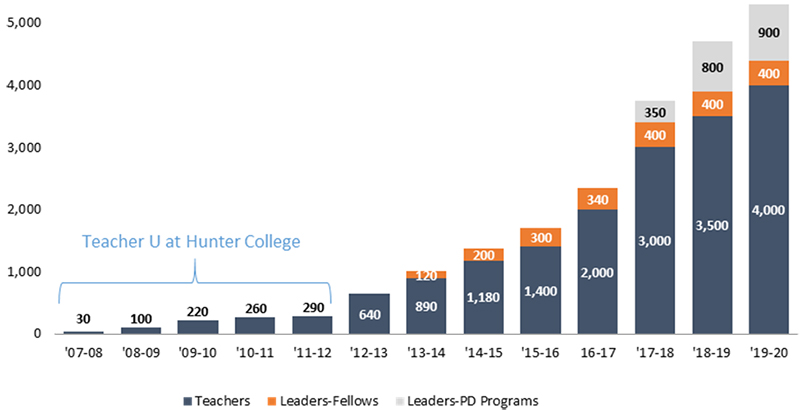
Teacher Preparation: When it launched as an incubator at New York City’s Hunter College more than a decade ago, Relay Graduate School of Education — then known as Teacher U — promised to upend the education and preparation of the nation’s educators. Instead of focusing on content knowledge or instructional theories, as traditional programs did, Relay would emphasize practical skills to support classroom management and student engagement. Closely tied to Teach For America and charter schools, Relay and its unorthodox approach had their detractors, despite a general consensus that many existing teacher prep programs were not very good. While those debates continue, Relay’s footprint has grown considerably — from 290 students in 2011-12 to more than 4,000 students and school leaders today. And it has distinguished itself in the critical area of producing more diverse teachers, bringing inclusion, particularly for black men, to a field that is roughly 80 percent white and female. (Read the full report)
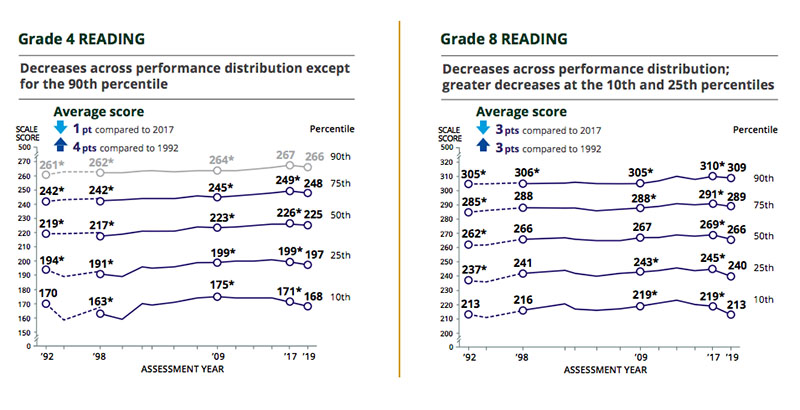
Big Picture: Newly released scores on the National Assessment of Educational Progress — commonly referred to as the Nation’s Report Card — found precious little progress to assess. The test, which measures performance on math and reading for students in fourth and eighth grades, has generally shown evidence of great stagnation over the past decade, and this year offered only more bad news: Reading scores, particularly for eighth-graders, have declined since 2017. Worse still, the drops are sharpest among the lowest-performing students. Among all jurisdictions, only Mississippi and Washington, D.C., saw progress in three of the four grade-subject combinations; and while those areas may offer lessons for the rest of the country, experts still found the results “disturbing” on the whole. As Stanford education professor Thomas Dee told The 74, “We’re seeing our system challenged here in terms of realizing our children’s potential.” (Read the full report)
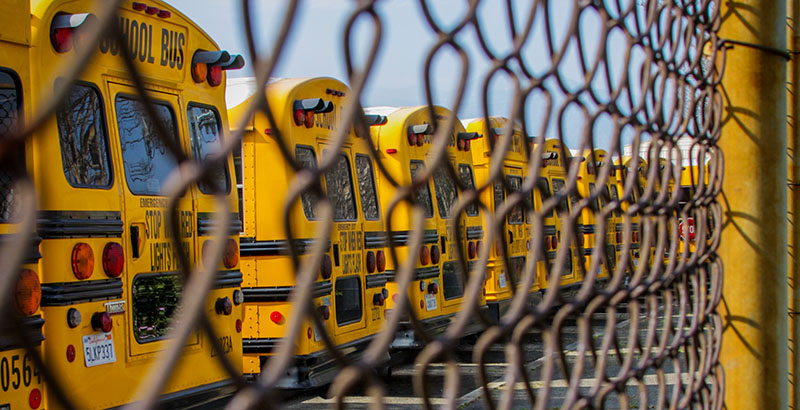
School Safety: Only one school district in the country has ever bought ballistic shields from Armor At Hand to protect children from school shooters. But that didn’t stop the company from getting a stamp of approval earlier this month from AASA, The School Superintendents Association. The company and others like it pay $18,000 a year for the right to call themselves “school solutions” partners with AASA — an arrangement that has raised ethical questions among some school safety experts. Following mass school shootings like the one last year in Parkland, Florida, school leaders from across the country have been inundated with sales pitches from security companies promising that their products will keep kids safe. Despite scant research to suggest they’re true, such claims have helped fuel a nearly $3 billion industry. Though AASA doesn’t explicitly endorse products, its chief operating officer acknowledged that it recommends to its members companies it believes to be “very high quality.” But some experts question whether ballistic shields are a viable school safety option — and accuse the company of “buying access.” (Read the full investigation)

Commentary: Elizabeth Warren’s new education plan, with its colossal increase in spending, dismissal of testing and crackdown on charter schools, is a cut-and-paste genuflect to the public relations departments of America’s national teachers unions, writes contributor Chris Stewart. “Finally, a Democratic presidential candidate brave enough to focus less on classroom instruction and more on factors outside of schools; a candidate informed enough to know there is nothing wrong with teaching and learning that won’t be fixed by big-budget infrastructure upgrades along with housing grants and health care. For unions, this must feel like Christmas. For Democratic school reformers, Pearl Harbor.” His prediction, should Warren win the election and her proposal be put in motion: “Her plan will let the education system off the hook for results, there will be no usable data to expose racial inequities and happy, college-educated adults in public schools will lord over children facing diminished futures.” (Read the full essay)
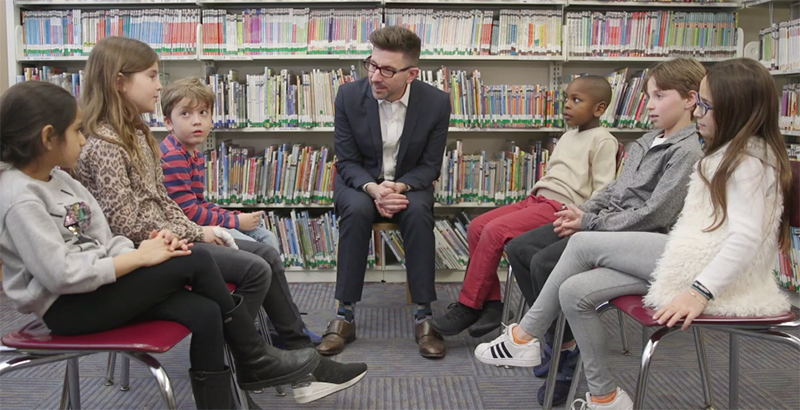
Social-Emotional Learning: When Marc Brackett was a middle schooler in New Jersey, school was incredibly difficult. That’s not because he wasn’t smart. Rather, he was the subject of intense bullying and found little help for his feelings of fear and humiliation from the adults in his life. In other words, math was the last thing on his mind. Brackett, now the founding director of the Yale Center for Emotional Intelligence, has been working to make sure students are able to focus on both school and their emotions. To do so, he makes the case that you need to start with the adults in a school building. Brackett’s new book, Permission to Feel, describes the work of his growing social-emotional learning program, which he is bringing to schools across the country — including the biggest, New York City. “Emotions matter,” Brackett said. “You just have to have that lens that how kids and adults feel in our schools is critically important to their success.” (Read the full profile)
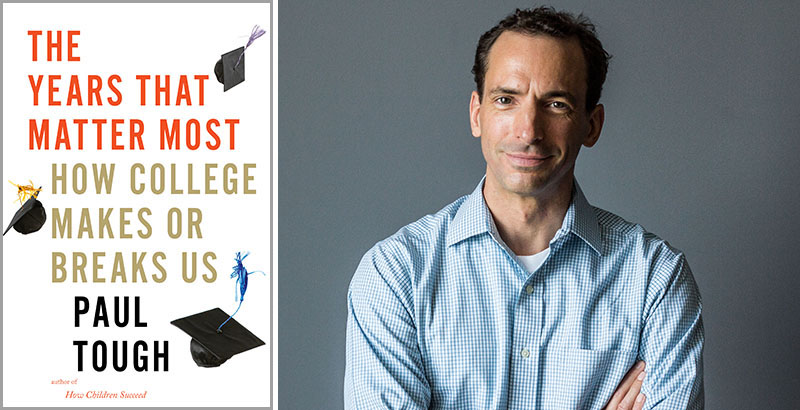
74 Interview: Is college worth the investment? Can a college education really change your life? Is the system truly fair and meritocratic? Conducting interviews for his new book, The Years That Matter Most: How College Makes or Breaks Us, with educators, researchers, college admissions directors and students struggling to get into the college of their choice, longtime education journalist Paul Tough found answers to these key questions — and lots to worry about. Our higher education system, he writes, is “a mobility engine that functions incredibly well for a small number of people and quite poorly for others.” The wealthy, the talented and the well-connected do just fine. But those from families that are “deprived or isolated or fractured, or all three” tend to benefit least. (Read the full interview)
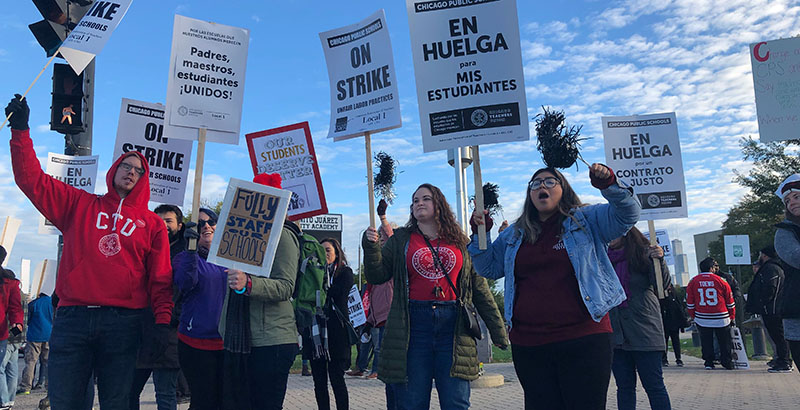
Analysis: Six years ago, Chicago Public Schools decentralized its finances to give principals control over school funds. While the salary schedule is negotiated by the district and the teachers union, principals have had the authority to decide how many and what kind of staffers are most critical to meet the needs of their specific mix of students. Now, the union is asking that principals no longer make these choices and that staffing prescriptions instead be cemented into contract language. Given the level of trust Americans place in school principals; students’ academic growth under the district’s principal- and school-based control; and the job satisfaction rate for Chicago principals, which leads to school stability, the union’s position is troubling, writes contributor Marguerite Roza — and bad for the city’s students. (Read the full analysis)
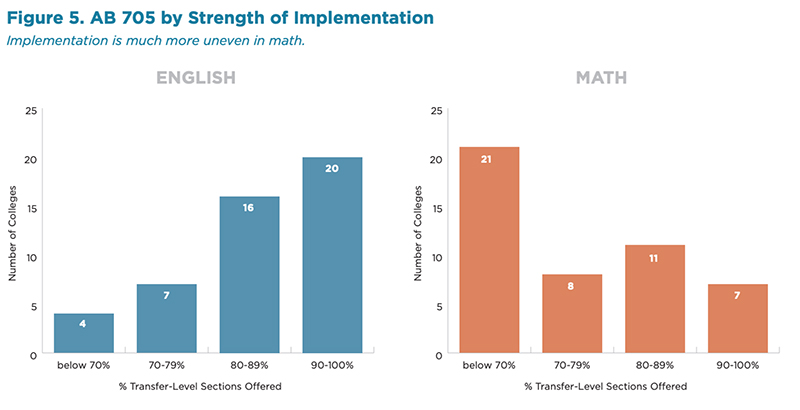
Big Picture: California’s new law to largely end the practice of sending community college students to courses that are below college level is taking shape, with campuses showing varying signs of implementing both the letter and spirit of the law. Three reports underscore different sides of that progress, with one showing that allowing more students to enter college-level courses is a net gain for the state and two others finding that colleges are creating more space for students to take these college-level courses, albeit unevenly. The new law aims to limit how many students are placed in remedial classes, which backers of the legislation and other scholars say needlessly thwart students’ chances of completing college and force students to take classes they don’t need. (Read the full report)
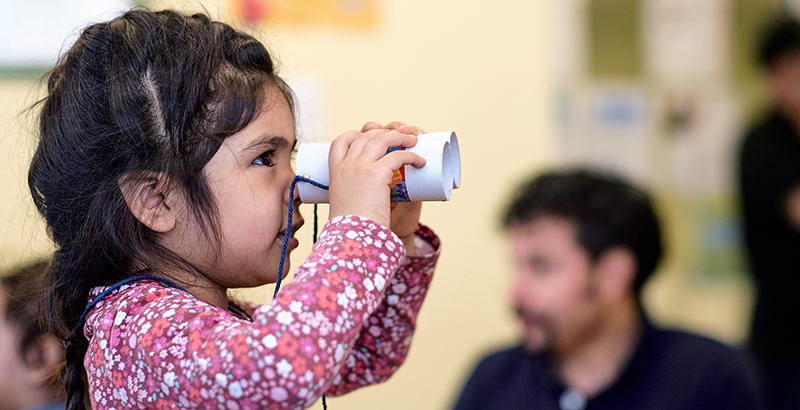
Early Literacy: Even people who don’t consider themselves education wonks may be familiar with the word gap: the difference — sometimes calculated in the tens of millions — in the number of words children from low-income families hear in their early years compared with the number that children from more well-off families are exposed to. While the quantity may be disputed, it is clear that children’s first three years are the most formative for brain development, and the richness of their verbal environment is critical to early literacy. That is where Providence Talks, a Rhode Island-based program that has shown promise in closing the gap, comes in. Young children wear a device known as a word pedometer that counts the number of words they hear throughout the day and the number of turns they take in conversation. Data from the device is downloaded by program staff, who then review it with families and strategize ways to increase children’s word exposure. The children and their parents participate in weekly sessions that also include playgroup activities and book giveaways. A Brown University professor who studied Providence Talks’s impact found that low-income parents made “tremendous progress,” with some boosting the number of words their children heard in a day from about 8,000 to 12,000, and now, the promising program is expanding to Birmingham, Detroit, Hartford, Louisville and Virginia Beach. (Read the full report)
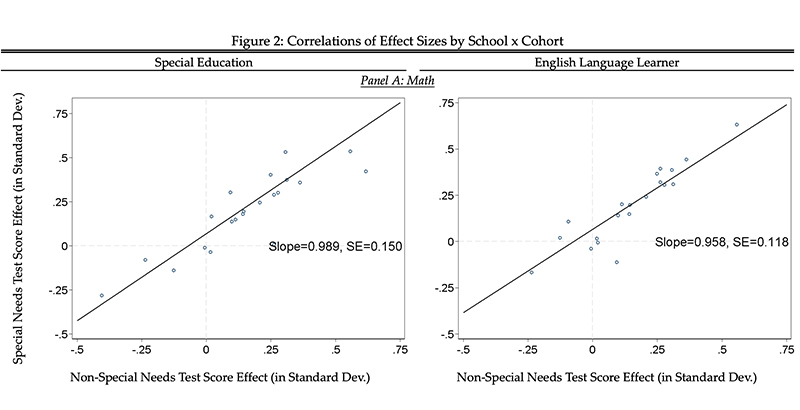
Big Picture: A common criticism of charter schools is that they work with fewer high-needs students, including those with disabilities or struggling to learn English. By disproportionately enrolling easier-to-teach kids, critics argue, charters are effectively gaming the system. But a study of Boston’s high-performing charter school sector from Tufts University economist Elizabeth Setren offers dramatic evidence to the contrary: While large numbers of special-needs students and English learners participate in charter school lotteries, she finds, charters are much more likely to remove those classifications and move students into general education settings. In more inclusive environments, thanks to the combination of high-intensity tutoring and increased instructional time, students facing the greatest learning challenges make huge leaps in both English and math when compared with similar students at traditional schools, Setren finds. (Read the full report)

Commentary: 74 contributor Conor Williams notes that the national debate around charter schools is partly fueled by a lack of understanding of what these publicly funded, independently run schools are meant to do. One of their original purposes was to be laboratories for innovation whose best practices could be shared back with traditional district schools. While New York City has been a prime battleground in the charter wars, this idea that district schools can learn from charters — and vice versa — has been working in the city’s District-Charter Collaboration. The initiative pairs two traditional district schools with two public charter schools to collaborate on a common problem. Williams looked at one “quad” of schools that tackled how to improve students’ ability to solve word problems in math. Over the course of the partnership, math proficiency rates rose steadily at both types of schools. That kind of success could reduce some of the resistance to charters while recognizing, as the person who runs the city collaboration said, that “we’re all here to work for kids, we’re all here to do the same stuff, we all love our jobs and love what we do and want to be better at it. So, let’s get to work, OK?” (Read the full essay)

Segregation: A wealthy, largely white suburb of East Baton Rouge has taken a step closer to seceding from the city’s school district after residents voted to incorporate as a new municipality, St. George. If leaders of the new city succeed in pressing the Louisiana Legislature to create a new school system — the impetus for the years-long breakaway campaign — it will be the fourth East Baton Rouge district breakaway in 16 years and at least the 74th nationwide since 2000. This white flight has left East Baton Rouge’s central city schools with hyperconcentrated poverty. More than 90 percent of students are of color and 84 percent are impoverished. While the district must increase the quality of its schools no matter what St. George does, East Baton Rouge School Board Vice President Tramelle Howard says a secession would make the push for equity much harder: “You can just look at the boundaries of what the community looks like and it’s clear it’s rooted in racism.” (Read the full report)
Get stories like these delivered straight to your inbox. Sign up for The 74 Newsletter

;)